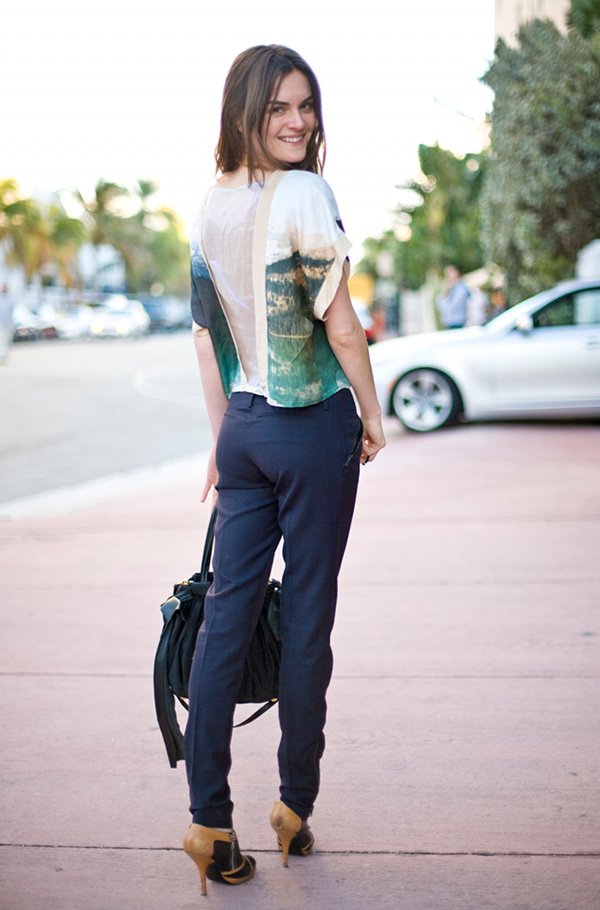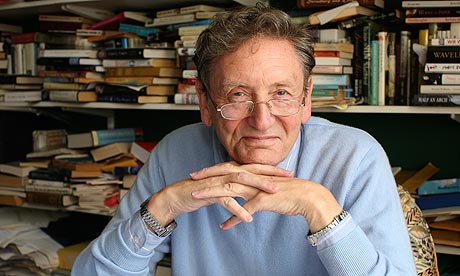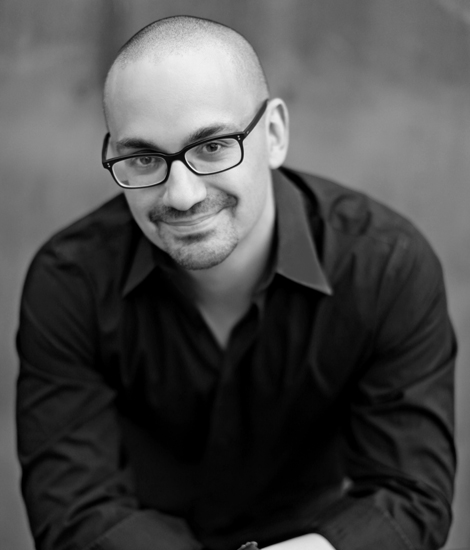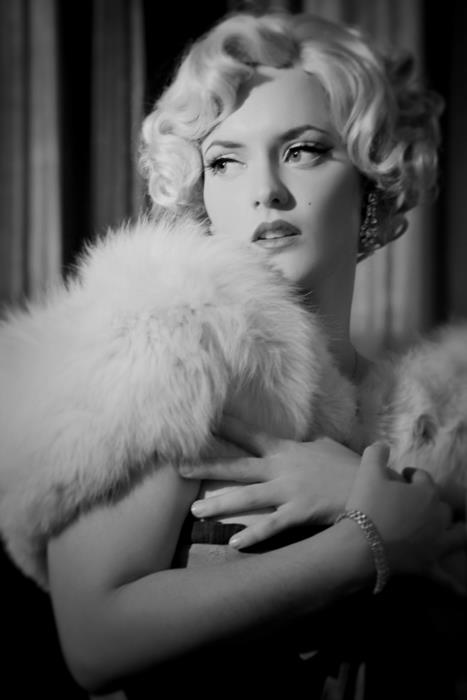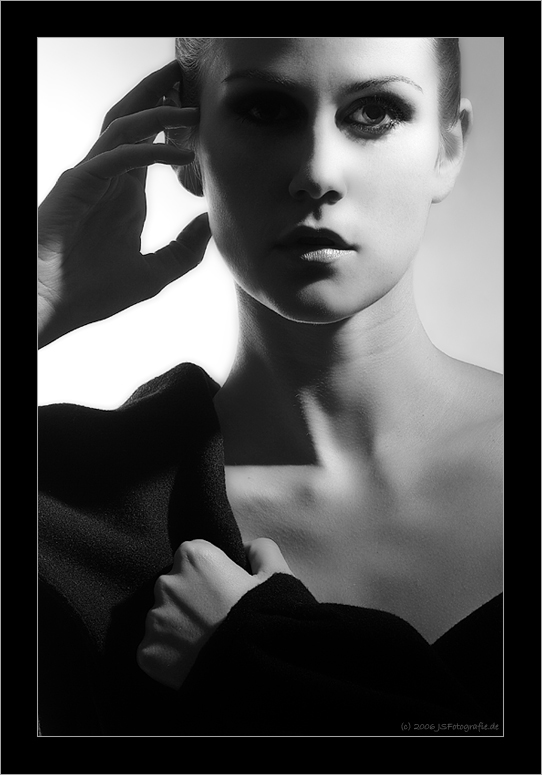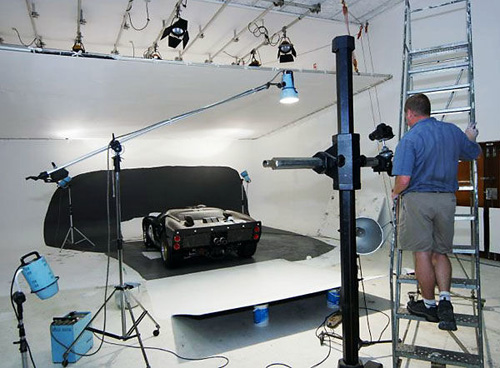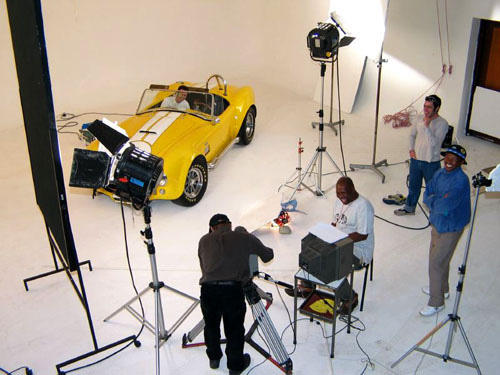Source (Google.com.pk)
Fashion Glamour Photography Biography
Stephen Gundle, Professor of Film and Television Studies at Warwick University, has written a substantial and engaging history of the elusive concept and practice(s) of glamour. While Gundle devotes much space to the star system and Hollywood movie actresses from the 1930s through to the 1950s and somewhat less space to television programming, especially of the ‘lifestyles of the rich and famous’ type, in the next few decades, he pays equal attention to the role of novels, the press, paintings and photography in Western Europe and the United States from the late 18th century to the late 20th century. The author’s previous scholarship on mass media, cultural politics and fashion in the 19th century informs this longer and broader historical framework and distinguishes his study of glamour from more specialised (but not necessarily more scholarly) works.(1)
In addition to employing and citing leading film scholars to interpret films, television, and visual culture more generally, Gundle incorporates ideas from cultural theorists such as Baudelaire (on the flaneur), Baudrillard (on the simulacrum), and Walter Benjamin (on the arcades of Paris as ‘housing for the dreaming collective’), as well as feminist theorists like Simone de Beauvoir (on courtesans’ materialism and self-gratification). Yet the relevant ideas of these theorists are always integrated into Gundle’s own analysis and used to interpret the many manifestations of glamour he describes in Glamour. A History. His literary and print culture criticism of a broad range of novels and other print media unpack their meaning for notions of glamour, though curiously there are fewer trenchant criticisms of films or television programmes.
Like most students of glamour, Gundle offers a definition, complete with his version of the etymology of glamour. Unlike some of these scholars, he foregoes reaching far and wide for the origins of the word – for instance, in Icelandic folklore – and settles on identifying its first occurrence in English literature in an 1805 poem by Sir Walter Scott. He traces Scott’s usage to the term glamer in low Scots language and tells his readers that glamer meant the influence of a charm on the eye. This is an apt beginning of a definition that Gundle explains is difficult to pin down. The definition he gives in the introduction and elaborates throughout the book privileges the ability to transform the image of people – primarily women – through their appearance and the creation of illusions. He explains that glamour has the ‘oxymoronic qualities’ of sleaze and class, ‘accessible exclusivity, and democratic elitism’ (p. 12). In the acknowledgements, he declares that he does not believe glamour is ‘just make-believe’ but that it is also “a source of visual excitement and pleasure’ (p. vii). Although he repeats descriptors like glitzy, ostentatious, and brash¸ he also conveys the theatricality and entertainment value of glamour.
According to Glamour, the earliest occurrences of the glamour phenomenon were in the late 18th and early 19th centuries in Britain and France. A revealing comparison clarifies the social and cultural meaning of glamour: Marie Antoinette, whose status was established by birth and bloodline and who alienated the public with her extravagance and aloofness, is not a glamorous figure (whatever Sophia Coppola’s film suggests); Napoleon Bonaparte, an upstart who ‘fabricated his own myth’ and deployed grand spectacles to draw and hold public attention, was glamorous (p. 28). The luxury and display of European courts was not for public consumption, for the European aristocracy did not need – or did not think that they needed – public sanction; the equally luxurious and far more public rituals of the Napoleonic Empire were designed to shore up public support. For nearly a century, glamour was associated with bourgeois emulators of the trappings of aristocratic society and lifestyles in Western Europe. The setting was a new society of mobility, both social and geographic. Although America became the lodestone of glamour in the 20th century, Americans, many of whom were European emigrants, often referenced European standards or models or, increasingly, media representations of European glamour. Glamour is persuasive about the importance of imitation and simulation based on nostalgia and pastiche in the reproduction of glamour.
Ultimately, Gundle argues that glamour was international, not national, in geographic scope. More particularly, glamour was an urban phenomenon, with an emphasis on large world cities like Paris, London, Rome, New York and Los Angeles. Large cities were more dynamic and mobile than the countryside or smaller cities; in large cities, one encountered and tried to impress people one did not know; shops, stores, and theatres, clustered in clearly delineated ‘fashionable areas’ where the glamorati gathered – and towards the end of the fashionable period of any area, the wannabe glamorati flocked; store windows, people in cafes, and street life itself provided a visual feast for urban flaneurs (and by the 1890s, though Gundle does not mention this, flaneuses).
Glamour then is tied to modern economies and modernity. Gundle offers an economic explanation about the rise of industrialism and economic growth, but focuses on the emergence of a commodity culture in which advertising and publicity, tied closely to the public media and the entertainment world, promotes consumption of products to transform the self. As advertising develops, it depends more on visual depictions of glamorous people – again, mainly women – to provoke yearning for their glamorous lifestyle, cleverly associated with the products but more directly, with the models, stars, socialites and celebrities that are represented in the advertising. Equally importantly, glamour can rarely be obtained, so it leads to ‘unquenched yearning’ and presumably consumption (p. 14).
One of the most attractive aspects of Gundle’s work are his combinations of brief descriptions of categories of glamorous personalities and more detailed though still succinct biographies of glamorous individuals. The first group biography is of the English Romantics, with their penchant for exotic or at least remote places and peoples or distant times. One of the accompanying individual biographies is of Lord Byron, who cultivated his appearance and styled his public movements. The second prosopography is of the courtesans of Second Empire Paris, expensively attired and extravagantly bejeweled, using costume and cosmetics, as well as lavish homes and spectacular public appearance, to attract and hold the wealthy men who “kept” them as well as public attention, even adoration. Biographies of notorious ‘grandes horizontales’ like Liane de Pougy follow.
Most of the profiles are of women, and their changing profiles indicate changes in glamour over time. By the late 19th century, actresses were more publicly displayed and subject to collective erotic fantasies than courtesans ever were, yet they remained sufficiently distant to retain some mystery. Sarah Bernhardt, with her conspicuous self-display (not only on stage but on posters) and quite conscious artificiality, deliberately sought sensation and notoriety. In the fin de siècle, Gaity Girls and later, in the United States, showgirls, played the role of beautiful but thoroughly artificial and theatrical glamour girls. Between the two world wars, glamour was represented by café society and movie actresses. New popular newspapers, many of them tabloids, and their society reporters exploited curiosity about high society and especially debutantes, writing voyeuristic narratives about their gilded existence. Other, often male, ‘professionals’ in the publicity departments of Hollywood studios choreographed actresses’ professional and private lives, prescribing not only the roles, costumes, make-up and publicity shots for their films, but also renaming them, falsifying their life stories and tutoring them in etiquette, posture, gestures, etc. As Gundle points out, all this manipulation tended to the standardisation of stars as products, depersonalising their faces to turn them ‘into something artificial and alluring’ (p. 180). When movie stars escaped the studio system and eschewed the fashionable and glamorous life, supermodels filled the void. Many of these models were defined, in many ways created, by other professionals, the photographer and stylist, who chose their wardrobes, props and/or furnishings, and entertainments on and off the catwalk and on and off camera. The message is made explicit: they were ‘groomed’ to be glamorous. The culmination of this trend is the celebrity for the sake of celebrity, the prototype being Paris Hilton.
Glamour, scholars agree, is linked inextricably to both fashion and femininity. Gundle does not directly cite the old distinction between style, which is individual and constant, and fashion, which is trendy and transient, but he does contrast the elegance of older elites, with their poise, control and up-market wardrobes, to the more youthful, dynamic, pleasure-seeking and down-market qualities of the modern fashion system. Conversely and thankfully, he avoids common connections between fashion and frivolity, especially a preoccupation with mere appearances and decoration. However, his remarks about relationships between fashion and femininity, and between glamour and femininity, are more problematic. He notes, but does not deconstruct, the cultural assumptions that women are more interested in fashion, that decoration is gendered feminine and that dandies and other men interested in fashion are – or are construed as – effeminate. He might also have paused to do some analysis of the relationship between imaginings about the female body, erotic fantasies, and glamour..








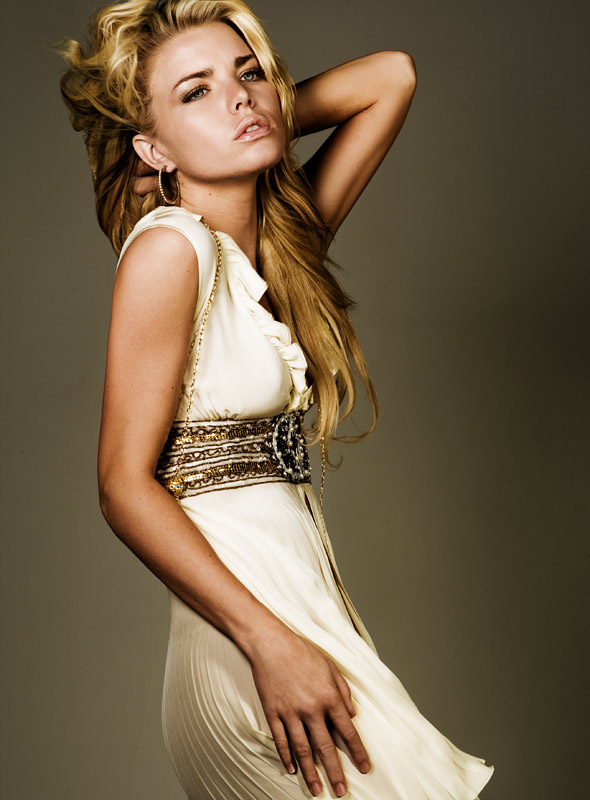

Fashion Glamour Photography Biography
Stephen Gundle, Professor of Film and Television Studies at Warwick University, has written a substantial and engaging history of the elusive concept and practice(s) of glamour. While Gundle devotes much space to the star system and Hollywood movie actresses from the 1930s through to the 1950s and somewhat less space to television programming, especially of the ‘lifestyles of the rich and famous’ type, in the next few decades, he pays equal attention to the role of novels, the press, paintings and photography in Western Europe and the United States from the late 18th century to the late 20th century. The author’s previous scholarship on mass media, cultural politics and fashion in the 19th century informs this longer and broader historical framework and distinguishes his study of glamour from more specialised (but not necessarily more scholarly) works.(1)
In addition to employing and citing leading film scholars to interpret films, television, and visual culture more generally, Gundle incorporates ideas from cultural theorists such as Baudelaire (on the flaneur), Baudrillard (on the simulacrum), and Walter Benjamin (on the arcades of Paris as ‘housing for the dreaming collective’), as well as feminist theorists like Simone de Beauvoir (on courtesans’ materialism and self-gratification). Yet the relevant ideas of these theorists are always integrated into Gundle’s own analysis and used to interpret the many manifestations of glamour he describes in Glamour. A History. His literary and print culture criticism of a broad range of novels and other print media unpack their meaning for notions of glamour, though curiously there are fewer trenchant criticisms of films or television programmes.
Like most students of glamour, Gundle offers a definition, complete with his version of the etymology of glamour. Unlike some of these scholars, he foregoes reaching far and wide for the origins of the word – for instance, in Icelandic folklore – and settles on identifying its first occurrence in English literature in an 1805 poem by Sir Walter Scott. He traces Scott’s usage to the term glamer in low Scots language and tells his readers that glamer meant the influence of a charm on the eye. This is an apt beginning of a definition that Gundle explains is difficult to pin down. The definition he gives in the introduction and elaborates throughout the book privileges the ability to transform the image of people – primarily women – through their appearance and the creation of illusions. He explains that glamour has the ‘oxymoronic qualities’ of sleaze and class, ‘accessible exclusivity, and democratic elitism’ (p. 12). In the acknowledgements, he declares that he does not believe glamour is ‘just make-believe’ but that it is also “a source of visual excitement and pleasure’ (p. vii). Although he repeats descriptors like glitzy, ostentatious, and brash¸ he also conveys the theatricality and entertainment value of glamour.
According to Glamour, the earliest occurrences of the glamour phenomenon were in the late 18th and early 19th centuries in Britain and France. A revealing comparison clarifies the social and cultural meaning of glamour: Marie Antoinette, whose status was established by birth and bloodline and who alienated the public with her extravagance and aloofness, is not a glamorous figure (whatever Sophia Coppola’s film suggests); Napoleon Bonaparte, an upstart who ‘fabricated his own myth’ and deployed grand spectacles to draw and hold public attention, was glamorous (p. 28). The luxury and display of European courts was not for public consumption, for the European aristocracy did not need – or did not think that they needed – public sanction; the equally luxurious and far more public rituals of the Napoleonic Empire were designed to shore up public support. For nearly a century, glamour was associated with bourgeois emulators of the trappings of aristocratic society and lifestyles in Western Europe. The setting was a new society of mobility, both social and geographic. Although America became the lodestone of glamour in the 20th century, Americans, many of whom were European emigrants, often referenced European standards or models or, increasingly, media representations of European glamour. Glamour is persuasive about the importance of imitation and simulation based on nostalgia and pastiche in the reproduction of glamour.
Ultimately, Gundle argues that glamour was international, not national, in geographic scope. More particularly, glamour was an urban phenomenon, with an emphasis on large world cities like Paris, London, Rome, New York and Los Angeles. Large cities were more dynamic and mobile than the countryside or smaller cities; in large cities, one encountered and tried to impress people one did not know; shops, stores, and theatres, clustered in clearly delineated ‘fashionable areas’ where the glamorati gathered – and towards the end of the fashionable period of any area, the wannabe glamorati flocked; store windows, people in cafes, and street life itself provided a visual feast for urban flaneurs (and by the 1890s, though Gundle does not mention this, flaneuses).
Glamour then is tied to modern economies and modernity. Gundle offers an economic explanation about the rise of industrialism and economic growth, but focuses on the emergence of a commodity culture in which advertising and publicity, tied closely to the public media and the entertainment world, promotes consumption of products to transform the self. As advertising develops, it depends more on visual depictions of glamorous people – again, mainly women – to provoke yearning for their glamorous lifestyle, cleverly associated with the products but more directly, with the models, stars, socialites and celebrities that are represented in the advertising. Equally importantly, glamour can rarely be obtained, so it leads to ‘unquenched yearning’ and presumably consumption (p. 14).
One of the most attractive aspects of Gundle’s work are his combinations of brief descriptions of categories of glamorous personalities and more detailed though still succinct biographies of glamorous individuals. The first group biography is of the English Romantics, with their penchant for exotic or at least remote places and peoples or distant times. One of the accompanying individual biographies is of Lord Byron, who cultivated his appearance and styled his public movements. The second prosopography is of the courtesans of Second Empire Paris, expensively attired and extravagantly bejeweled, using costume and cosmetics, as well as lavish homes and spectacular public appearance, to attract and hold the wealthy men who “kept” them as well as public attention, even adoration. Biographies of notorious ‘grandes horizontales’ like Liane de Pougy follow.
Most of the profiles are of women, and their changing profiles indicate changes in glamour over time. By the late 19th century, actresses were more publicly displayed and subject to collective erotic fantasies than courtesans ever were, yet they remained sufficiently distant to retain some mystery. Sarah Bernhardt, with her conspicuous self-display (not only on stage but on posters) and quite conscious artificiality, deliberately sought sensation and notoriety. In the fin de siècle, Gaity Girls and later, in the United States, showgirls, played the role of beautiful but thoroughly artificial and theatrical glamour girls. Between the two world wars, glamour was represented by café society and movie actresses. New popular newspapers, many of them tabloids, and their society reporters exploited curiosity about high society and especially debutantes, writing voyeuristic narratives about their gilded existence. Other, often male, ‘professionals’ in the publicity departments of Hollywood studios choreographed actresses’ professional and private lives, prescribing not only the roles, costumes, make-up and publicity shots for their films, but also renaming them, falsifying their life stories and tutoring them in etiquette, posture, gestures, etc. As Gundle points out, all this manipulation tended to the standardisation of stars as products, depersonalising their faces to turn them ‘into something artificial and alluring’ (p. 180). When movie stars escaped the studio system and eschewed the fashionable and glamorous life, supermodels filled the void. Many of these models were defined, in many ways created, by other professionals, the photographer and stylist, who chose their wardrobes, props and/or furnishings, and entertainments on and off the catwalk and on and off camera. The message is made explicit: they were ‘groomed’ to be glamorous. The culmination of this trend is the celebrity for the sake of celebrity, the prototype being Paris Hilton.
Glamour, scholars agree, is linked inextricably to both fashion and femininity. Gundle does not directly cite the old distinction between style, which is individual and constant, and fashion, which is trendy and transient, but he does contrast the elegance of older elites, with their poise, control and up-market wardrobes, to the more youthful, dynamic, pleasure-seeking and down-market qualities of the modern fashion system. Conversely and thankfully, he avoids common connections between fashion and frivolity, especially a preoccupation with mere appearances and decoration. However, his remarks about relationships between fashion and femininity, and between glamour and femininity, are more problematic. He notes, but does not deconstruct, the cultural assumptions that women are more interested in fashion, that decoration is gendered feminine and that dandies and other men interested in fashion are – or are construed as – effeminate. He might also have paused to do some analysis of the relationship between imaginings about the female body, erotic fantasies, and glamour..
Fashion Glamour Photography

Fashion Glamour Photography

Fashion Glamour Photography

Fashion Glamour Photography

Fashion Glamour Photography

Fashion Glamour Photography

Fashion Glamour Photography

Fashion Glamour Photography

Fashion Glamour Photography

Fashion Glamour Photography

Fashion Glamour Photography




